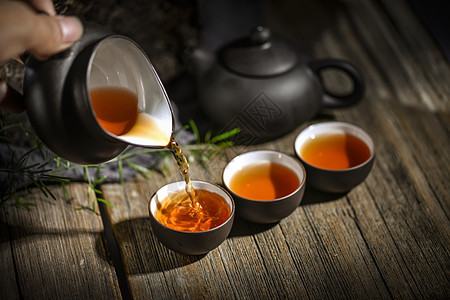- 1. The cultural background of tea: an elegant symbol of oriental civilization
- The roots of tea culture are deeply rooted in the soil of the East, especially in China, Japan, India and other countries, and tea has been endowed with multiple philosophical, artistic and social meanings.
China: The Tea Ceremony and the Unity of Heaven and Man
China is the homeland of tea, and Lu Yu’s “Book of Tea” in the Tang Dynasty laid the theoretical foundation for tea culture. The spirit of the tea ceremony pays attention to “harmony, tranquility, pleasure and truth”, and pursues the harmonious coexistence of man and nature through the process of making and tasting tea.
Literati and writers used tea to meet friends, Su Shi, Bai Juyi, etc. all used tea into poetry, and tea became a symbol of elegant life. During the Ming and Qing dynasties, the system of the six major tea categories (green tea, black tea, oolong tea, etc.) matured, and tea culture penetrated into the market and temples.

Japan: Zen tea
The Japanese tea ceremony originated in China, but developed a unique “wabi-sabi” aesthetic. Sen no Rikyu advocated “one period, one meeting”, sublimating the tea ceremony into a ritual of meditation, emphasizing focusing on the present moment and purifying the heart and few desires.
United Kingdom: Afternoon Tea & Social Etiquette
After tea was introduced to Europe in the 17th century, the British aristocracy developed afternoon tea into a refined social culture, and the combination of silverware, bone china and black tea became synonymous with elegance and taste.
Global Convergence: The Borderless Language of Tea
From Moroccan mint tea to Indian masala milk tea, tea has evolved its unique flavor in different regions and has become a link of cultural exchange.
- Second, the advantages of tea: the health code of nature’s gifts
- The reason why tea is popular all over the world is not only because of its cultural heritage, but also because of its irreplaceable natural advantages:
Pure and natural, zero burden
Tea is derived from the young leaves of the tea tree, without added sugar and preservatives, it is a pure plant drink, suitable for people who pursue a healthy life.
Rich categories to meet diverse needs
Green tea is fresh, black tea is mellow, oolong tea is layered, and white tea is elegant…… Tea with different degrees of fermentation brings different tastes and effects, and adapts to different physiques and scenes.
Sustainability and economic value

The tea industry supports the livelihoods of millions of farmers around the world, and the ecological tea garden model promotes environmental protection and rural revitalization.
- 3. The efficacy of tea: scientifically verified health wisdom
- Modern science confirms that the active ingredients in tea (tea polyphenols, catechins, L-theanine, etc.) have multiple health benefits:
Antioxidant and anti-aging
The EGCG (epigallocatechin gallate) in green tea is a powerful antioxidant that scavenges free radicals and reduces the risk of chronic disease.
Refresh the mind and relieve stress
Caffeine works synergistically with L-theanine to improve concentration without triggering coffee-like anxiety, and is known as “sober relaxation”.
Metabolic regulation and weight management
Oolong tea and pu-erh tea can promote lipolysis and assist in the control of blood lipids; The probiotics in black tea contribute to gut health.
Boosts immunity
White tea is rich in theanine and polysaccharides, which activate immune cells and provide natural protection, especially during the change of seasons.

Cultural healing and spiritual nourishment
The process of making tea itself is a mindfulness practice that relieves modern anxiety and rebuilds a sense of inner order.
- 4. How to integrate tea into modern life?
- Tea on demand: a cup of green tea in the morning to refresh you, black tea with dim sum in the afternoon, and a pu’er after dinner to digest your appetite.
Creative drinking: Try cold brew tea, tea latte, or create creative teas with fruits, flowers, and herbs.
Meet friends with tea: Set up a tea ceremony at home and use a cup of tea to connect with others.
epilogue
Tea is a cultural epic flowing in a cup, and it is a guardian of health across time and space. Whether it’s to taste the fragrance of the mountains or find a sense of inner peace, tea can inject poetry and energy into life in its own unique way. As the Tang Dynasty poet Lu Tong said: “One bowl of throat kiss moist, two bowls of loneliness…… Seven bowls can’t be eaten, but the two armpits are used to the breeze. “I hope we can all find our own breeze and bright moon in a cup of tea.









 LED HOST RADIATOR WHITE
LED HOST RADIATOR WHITE
 LED HOST RADIATOR BLACK
LED HOST RADIATOR BLACK
 HOST RADIATOR
HOST RADIATOR
 LED HOST RADIATOR PINK
LED HOST RADIATOR PINK

 Computer CPU Cooler WHITE 1
Computer CPU Cooler WHITE 1
 Computer CPU Cooler WHITE 2
Computer CPU Cooler WHITE 2
 Computer CPU Cooler BLACK
Computer CPU Cooler BLACK

 Square LED Host Radiator WHITE
Square LED Host Radiator WHITE
 Square LED Host Radiator BLACK
Square LED Host Radiator BLACK

 LED Host Radiator
LED Host Radiator

 Watch Accessories
Watch Accessories
 Watch Accessories 1
Watch Accessories 1
 Watch Accessories 2
Watch Accessories 2
 Watch Accessories 3
Watch Accessories 3
 Watch Accessories 4
Watch Accessories 4
 Watch Accessories 5
Watch Accessories 5
 Watch Accessories 6
Watch Accessories 6
 Watch Accessories 7
Watch Accessories 7





 3D Printed Portrait Sculptures
3D Printed Portrait Sculptures
 Car Mural (LED Light) 1
Car Mural (LED Light) 1

 Classic Black Tea
Classic Black Tea
 Classic Green Tea
Classic Green Tea
 Coarse Leaves Black Tea
Coarse Leaves Black Tea
 Old Tree Black Tea
Old Tree Black Tea